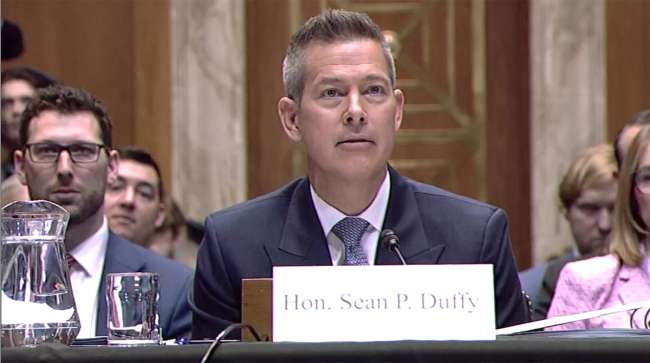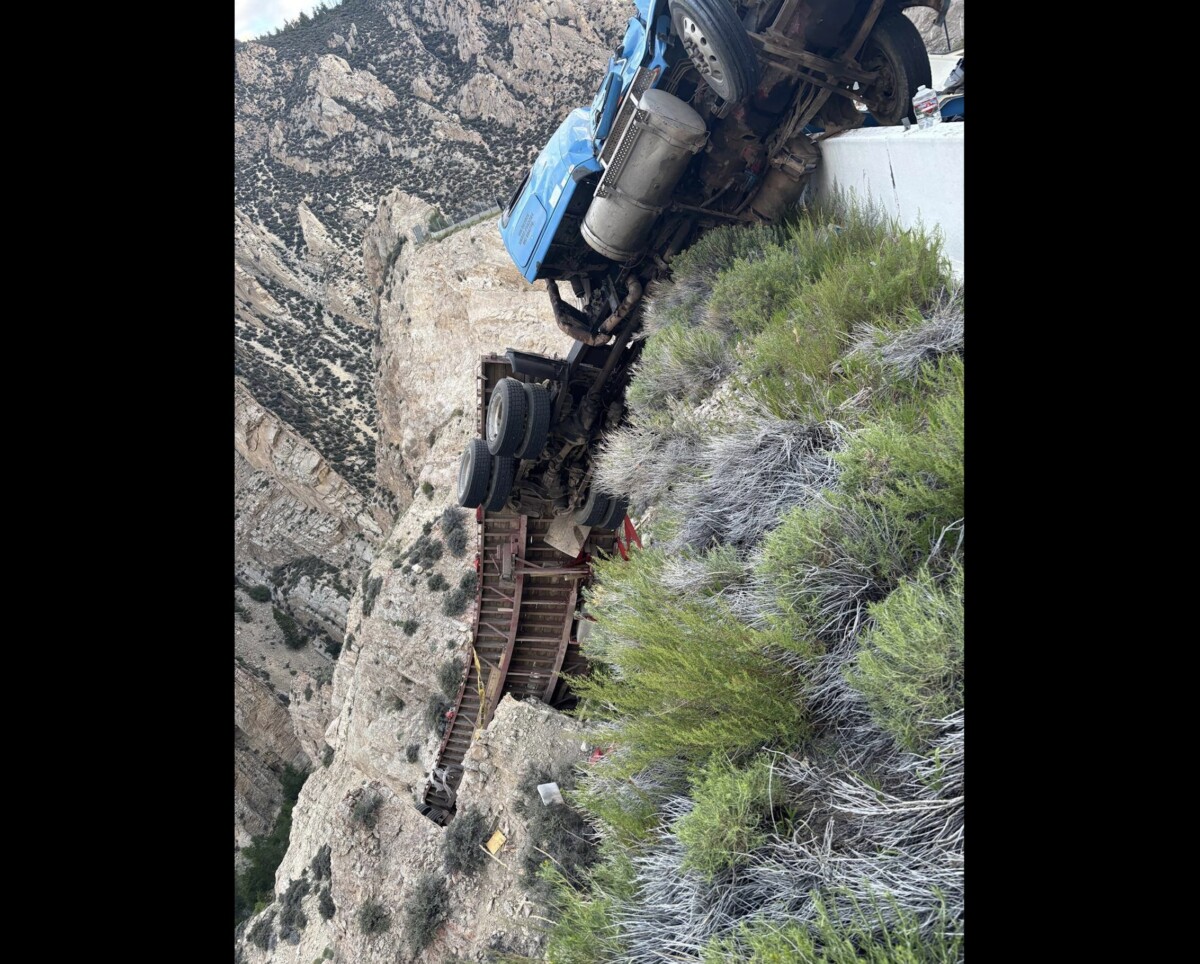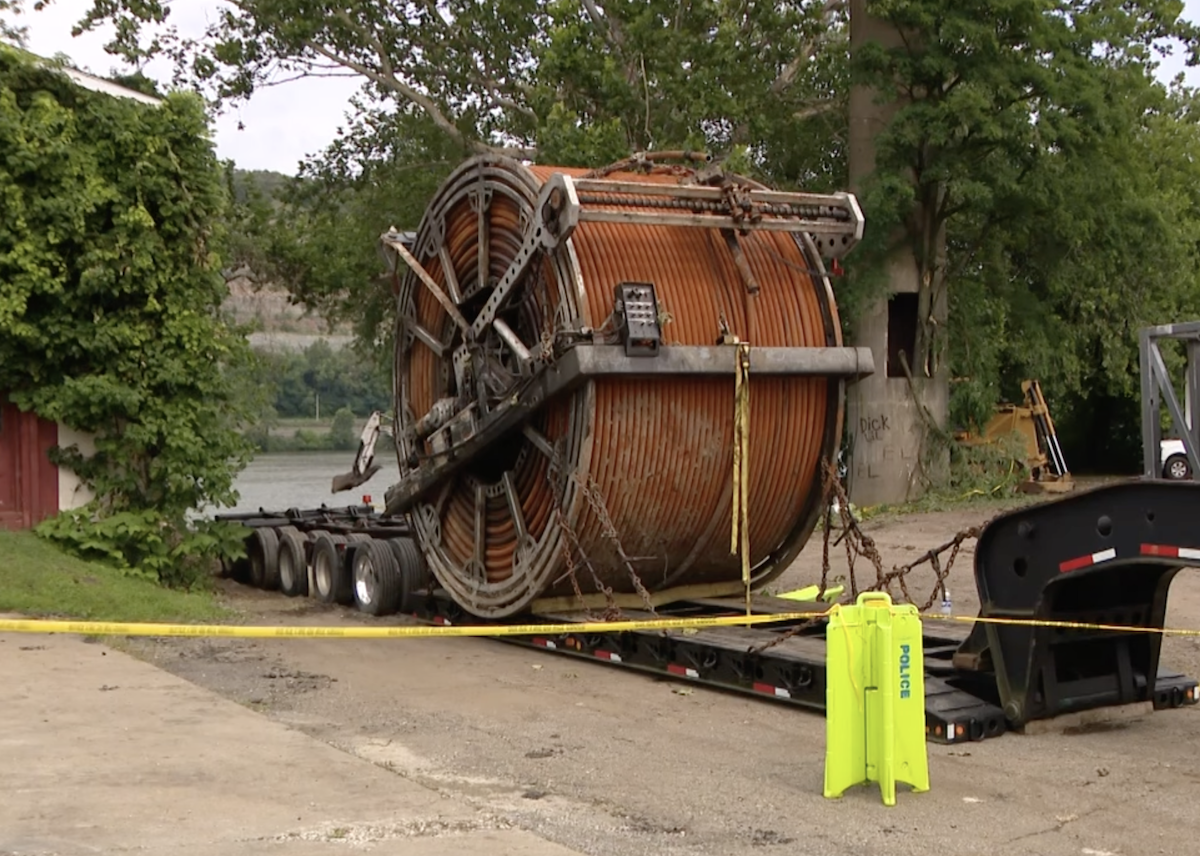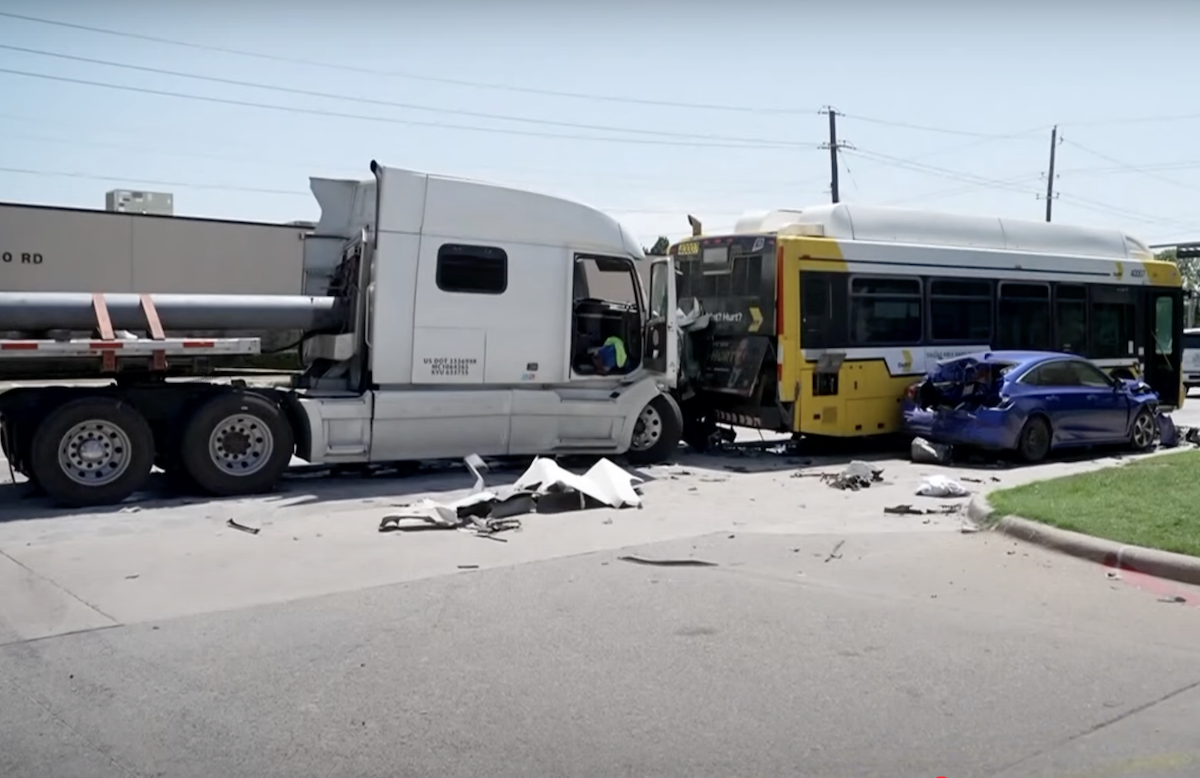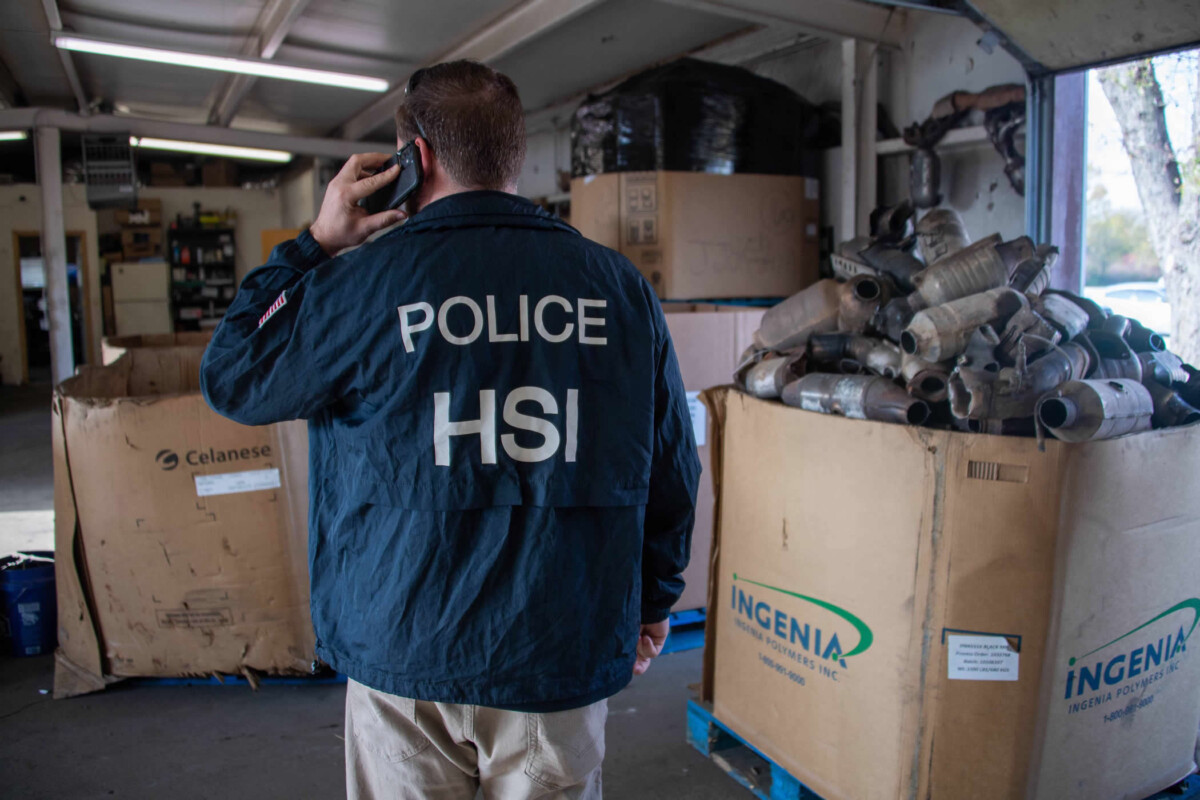Duffy speaks at the April 2 hearing. (epw.senate.gov)
WASHINGTON — The nation’s top transportation officer is asking Congress to consider reforming permitting regulations specific to construction projects as part of an update to federal highway policies next year.
Addressing the historically bipartisan Senate Environment and Public Works Committee on April 2, Transportation Secretary Sean Duffy pointed to the potential for ramping up the modernization of mobility corridors during President Donald Trump’s tenure in the White House.
Cutting what he described as “unnecessary red tape” to help realize “big beautiful infrastructure” is a top priority for transportation officials and stakeholders, Duffy said during the hearing, pointing to reforms in the environmental permitting process as an approach for achieving such results.
“Let’s do it efficiently. Let’s cut the red tape. We can still protect the environment but let’s move these projects faster,” he said. “Lawmakers on all sides of the aisle can agree that infrastructure projects are taking way too long to complete.”
Chairman @SenCapito and @USDOT Secretary @SecDuffy are ready to get to work on the Surface Transportation Reauthorization Bill 🛣️
Catch up on today’s hearing here: https://t.co/N4to1dTuA5 pic.twitter.com/s0c43imphc
— EPW Republicans (@EPWGOP) April 2, 2025
Duffy noted permit-related delays can have financial implications. “The process to go through to begin these projects takes so long and if they’re delayed five, six, 10 years, the cost of completion is significant,” he said.
The secretary also stressed myriad benefits associated with advancement of policies designed to enhance supply chain connectivity, as well as those targeted toward adoption of emerging technologies and roadway safety initiatives. A day before the hearing, his agency announced nearly $1 billion in funding availability for the Safe Streets and Roads for All grant program, an initiative designed to reduce fatalities along highways and corridors.
“Funds will support communities in the development of road safety action plans and improve unsafe roadway corridors by implementing effective interventions. Additionally, these funds can be utilized to test, or demonstrate, safety features to study their effectiveness,” according to background information about the program DOT provided.
The @USDOT Safe Streets and Roads for All (SS4A) Grant Program notice of #FundingOpportunity for FY25 is now open: https://t.co/XXFgs65NFG #SafeStreetsForAll #TransportationSafety #SS4A
— UC Berkeley SafeTREC (@UCBSafeTREC) March 31, 2025
EPW is among the congressional committees proceeding expeditiously to finalize comprehensive multiyear highway legislation by sometime next year. Current federal authority for most highway programs were tucked into the Biden-era bipartisan infrastructure law and expire in the fall of 2026.
EPW Chairwoman Shelley Moore Capito (R-W.Va.) is leading the Senate’s efforts linked to the upcoming highway reauthorization bill. Reaching bipartisan consensus on many programs and initiatives is central to her objective. As she put it, “My vision for this legislation is simple, but important. We want to improve the movement of people and goods.”
“Our roads and bridges are what connect us to the people and places that matter most in our lives,” the chairwoman continued. “They help American businesses, large and small, create jobs and economic opportunities, and enable that competitiveness in the global marketplace. They connect everything around us from point ‘A’ to point ‘B.’ Every state has transportation needs and stands to benefit from the surface transportation reauthorization bill.”
Nick Darman of Alvys discusses the evolution of transportation management systems and workflow automation, while David Bell of CloneOps.ai shares insights from the Manifest 2025 supply chain innovation conference. Tune in above or by going to RoadSigns.ttnews.com.
Her colleagues on the panel echoed much of Duffy’s viewpoint about project delivery and environmental review processes. “We need permitting reform that limits the radical far-left environmental groups from crushing every project, particularly in my state,” Sen. Dan Sullivan (R-Alaska) said at the hearing.
Sen. Sheldon Whitehouse (D-R.I.), the EPW panel ranking member, echoed concerns related to environmental permitting rules and regulations. He also reminded the secretary about the panel’s bipartisan tradition: “The door is open in this committee to big, bipartisan things for our infrastructure and I encourage you to walk through that open door,” he said.
“Federal transportation programs really are so integral to the success of our states’ projects like road maintenance, bridge repairs, safety projects,” added Sen Angela Alsobrooks (D-Md.) during her exchange with the secretary.
On the other side of the Capitol, Rep. Sam Graves (R-Mo.), chairman of the Transportation and Infrastructure panel, is leading the House’s reauthorization of commuter corridors. This year, Graves has directed the committee to outline a road map for the next multiyear measure. “It’s time to support our builders and workers by giving them the tools they need to complete projects more efficiently and streamlining the project delivery process,” Graves said last month. “These goals go hand in hand with any infrastructure issue, but especially one of the committee’s top priorities this Congress: legislation to reauthorize our nation’s surface transportation programs, commonly known as the ‘highway bill.’ ”
The $1.2 trillion Infrastructure Investment and Jobs Act of 2021 dedicated billions of dollars for freight corridors and supply chain improvement programs, infrastructure rehabilitation projects, the adoption of emerging technologies and comprehensive safety initiatives for commuters and pedestrians.
A recent review of infrastructure networks concluded the conditions of the nation’s highways are at a near-failing grade. In its quadrennial report card published last month, the American Society of Civil Engineers gave a D+ grade for surface transportation systems.

